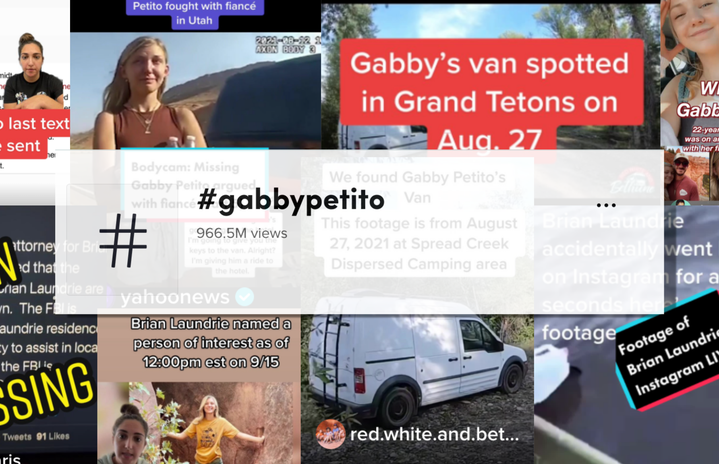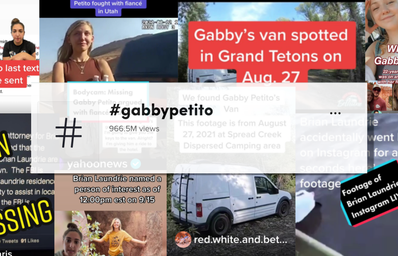For the past few weeks, the news and social media are being flooded with the story of a missing woman named Gabby Petito. What some might call a “firestorm” erupted online as people from around the country spread the news of Gabby’s disappearance and pleaded for anyone with information to come forward.
Gabby, a 21-year-old Florida native, was reported missing on Sept. 11, 10 days after her boyfriend, Brian Laundrie, returned from their cross-country road trip to his parents’ home in North Port, Florida, alone. Up until Sept. 21, Petito was considered missing, and authorities spent countless hours searching through hundreds of acres of wilderness in an attempt to find her and bring her home alive.
This type of news coverage for a missing person case is not unheard of but usually rare. With that amount of media pressure, many high coverage cases are given a large number of resources and personnel to deliver timely news and evidence to the public. Gabby’s body was sadly found in Wyoming only one week after being reported missing and identified three days later. (Here is a timeline of Gabby’s case).
Though Gabby’s story is a tragedy, her family did receive closure soon after she was reported missing. Unfortunately, many missing women remain unfound. According to the National Crime Information Center, 268,744 women went missing in the year 2020 alone. Women are also 1.4 times more likely to go missing than men and make up 58% of missing person cases. So how does one case out of hundreds of thousands go viral overnight?
Gabby Petito traveled with her boyfriend in a converted van, a familiar story, as a nomadic lifestyle has become more popular. Many people nowadays are converting vans to live in and taking to the road, documenting their travels through blogging and on YouTube. The popularity of van life and Gabby’s race contributed to her story going viral on social media and the news.
Going viral played a part in how quickly police found Gabby. A family from Tampa, Florida, on vacation, realized their home video captured footage of Gabby’s van at a campsite. Gabby’s body was later found near that campsite. TikTok played a role in the investigation too, due to how many users were sharing Gabby’s story. A woman claimed to have given Brian Laundrie a ride on Aug. 29, days after Gabby was last seen alive. She says she recognized him from TikToks days after she and her boyfriend gave him a ride. The latest news reports say that the FBI has been in contact with this woman.
Unfortunately, for many women, especially women of color, news coverage like this is scarce if their case gets any coverage at all. Most people following Gabby Petito’s story probably have never heard of Lauren Cho, who went missing in Bombay Beach, California, on June 28 of this year. She and a friend quit their jobs and took a cross-country road trip from New Jersey to California in a converted bus. Sound familiar? Cho had a dream to someday open a food truck in California, hoping to make a career out of her love for cooking. But on June 28, she walked out into the desert without food or water and was never seen again. Keep in mind that Gabby and Lauren’s cases, though similar on the outside, are unique in the exact details of the case. However, both women went missing, and only one was found a week later.
And what about the 700 Native American women who have been reported missing in Wyoming in the last decade alone? Their stories go untold. There are too many unsolved cases of women of color in underserved communities being overlooked and forgotten. Almost half of the individuals who go missing every year are minorities, even though racial minorities only make up 23.7% of the population in the United States. This disproportionate representation in missing person cases is frightening, especially since many of these cases go unsolved. On top of that, there is more media coverage for white missing persons than people of color, which affects which cases are solved and which families are left without answers. The most important thing you can do is share and listen to all stories of missing individuals you come across in hope that someone somewhere will have answers.


